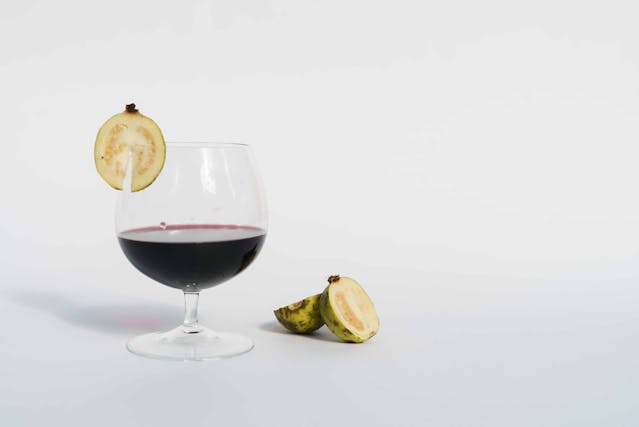So, what is guava? Let’s explore the tropical fruit (guava), together with its health benefits, nutritional values, types, and culinary uses.
Table of Content:
Guava
Guava, a tropical fruit native to Central America, has earned global recognition for its impressive nutritional profile and versatility in the kitchen. Known for its sweet, fragrant flavor and high vitamin C content, guava is not just delicious but also packed with health benefits. In this content, we’ll get into the nutritional value, types, health benefits, and diverse culinary uses of this remarkable fruit, guava.
Health Benefits of Guava
Guava is often touted as a superfood due to its dense nutrient content and potent medicinal properties. Top health benefits of including guava in your diet below.
1. High in Vitamin C
Guava is an incredible source of vitamin C—containing more than four times the amount found in oranges. A 100-gram serving of guava provides over 200% of the daily recommended intake for vitamin C, and therefore making it a powerful immunity booster. Vitamin C plays a crucial role in strengthening the immune system, protecting the body from infections, and promoting skin health by aiding collagen production.
2. Rich in Antioxidants
Guava is full of antioxidants like lycopene, vitamin C, and beta-carotene, which help neutralize harmful free radicals in the body. Free radicals are unstable molecules that can damage cells and have links to chronic diseases such as cancer, heart disease, and premature aging. Lycopene, in particular, gives some guavas their pink color and is popular for its cancer-fighting properties.
3. Promotes Digestive Health
One of the most significant benefits of guava is its fiber content. A single fruit can provide about 5 grams of dietary fiber, which is about 20% of the recommended daily intake. Furthermore, fiber is essential for maintaining healthy digestion, preventing constipation, and promoting regular bowel movements. The fruit’s seeds, often eaten along with the flesh, serve as natural laxatives.
4. Blood Sugar Control
Despite its sweetness, guava has a low glycemic index (GI) and high fiber content, making it an excellent choice for individuals with diabetes or those at risk of developing it. Guava helps regulate blood sugar levels and prevents sharp spikes, making it an ideal fruit for maintaining steady glucose levels. Additionally, the antioxidants in guava protect against insulin resistance, a precursor to type 2 diabetes.
5. Heart Health
The high fiber content in guava helps to lower cholesterol levels by binding to bile acids in the digestive tract and eliminating them from the body. In addition, guava is rich in potassium, which helps regulate blood pressure by counteracting the effects of sodium. As a result, regular consumption of guava can reduce the risk of cardiovascular diseases by lowering blood pressure, improving cholesterol profiles, and maintaining a healthy heart rhythm.
6. Weight Management
Guava is a low-calorie fruit that provides a significant amount of dietary fiber, which helps to promote feelings of fullness and satiety. As a result, this makes it an excellent addition to a weight-loss diet, as it can help curb hunger pangs and prevent overeating. Additionally, the natural sugars in guava are less likely to cause insulin spikes compared to refined sugars, making it a healthier option for those looking to manage their weight.
7. Enhances Vision
Guava contains vitamin A, a nutrient vital for maintaining good vision. Hence, regular consumption of guava can help protect against age-related macular degeneration, cataracts, and general vision loss. The vitamin A content helps keep the surface of the eyes moist and improves overall eye health.

Nutrients of Guava
Guava is rich in essential vitamins, minerals, and antioxidants, therefore making it one of the most nutrient-dense fruits available. An approximate breakdown of the nutrients found in 100 grams of guava.
- Calories: 68 kcal
- Carbohydrates: 14.3 g
- Protein: 2.6 g
- Fat: 0.95 g
- Dietary Fiber: 5.4 g
- Vitamin C: 228 mg (254% of daily recommended intake)
- Vitamin A: 624 IU
- Potassium: 417 mg
- Folate: 49 mcg
With its high fiber content, vitamin C, and essential minerals like potassium and magnesium, guava is a health-boosting fruit that supports various bodily functions.
Types of Guava
Guava comes in several varieties, each with its own unique flavor, texture, and color. The followign are some of the most popular types of guava.
- Apple Guava (Common Guava): This is the most widely cultivated type and is often what people picture when they think of guava. It has pale green to yellow skin, white or pink flesh, and a sweet, mildly tangy flavor. It’s commonly eaten fresh or made into juices.
- Red Guava (Strawberry Guava): Known for its reddish-purple skin and pink flesh, this guava variety has a more intense flavor compared to the common guava. It’s often used in tropical juices and desserts.
- Yellow Guava: This variety features a yellow skin and soft, sweet flesh. It’s particularly popular in desserts and can be eaten fresh or used in making jams.
- White Guava: Characterized by its pale skin and white flesh, this type of guava is slightly sweeter than the pink-fleshed varieties and is commonly used in juices, smoothies, or eaten fresh.
- Tropical Pink Guava: With pink flesh and green skin, this variety is famous for its strong, sweet flavor and is often used in beverages, jams, and pastries.

Culinary Uses of Guava
Guava’s versatility in the kitchen makes it a popular ingredient in a variety of dishes, both sweet and savory. Let’s explore some ways to enjoy guava.
1. Raw: Guava can be eaten fresh on its own or sliced and added to fruit salads. As a result, it’s a delicious, low-calorie snack that provides a burst of flavor and nutrition.
2. Juices and Smoothies: Guava juice is a popular beverage in tropical countries. It can also be blended with other fruits like mango, pineapple, or orange to create refreshing smoothies.
3. Jams and Jellies: Due to its high pectin content, guava is commonly used to make jams, jellies, and preserves. These products retain the fruit’s natural sweetness and tang, making them perfect for spreading on toast or adding to desserts.
4. Guava Paste (Dulce de Guayaba): This sweet, thick paste is a traditional delicacy in many Latin American countries. As a result, it’s often paired with cheese as a dessert or snack and is spread on bread or used as a filling in pastries.
5. Salsas and Chutneys: Guava’s sweet and tangy flavor makes it an excellent addition to salsas and chutneys, and as a result can be served with grilled meats, fish, or as a dip.
6. Desserts: Guava is a popular ingredient in tropical desserts such as pies, tarts, sorbets, and ice creams.
7. Tea: Guava leaves are also beneficial and can be brewed into a tea that’s known for its digestive properties and ability to alleviate diarrhea.


